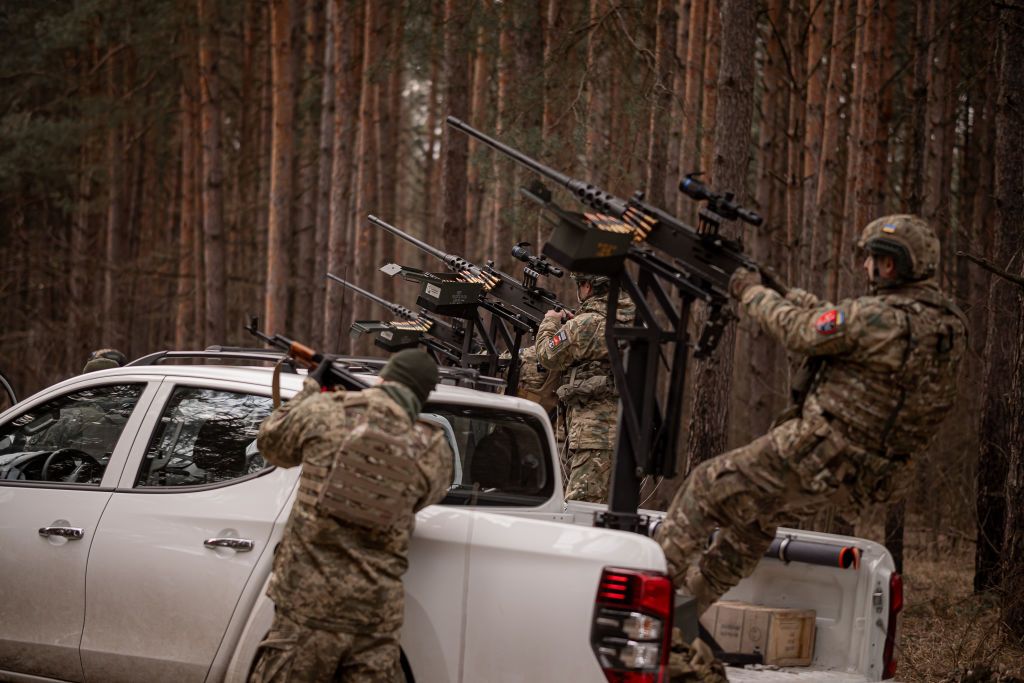
Opinion: Trump is Putin's only hope now
Former U.S. President Donald Trump arrives at the New York Criminal Court in New York, U.S., on April 26, 2024. (Curtis Means/Daily Mail/Bloomberg via Getty Images)

Carl Bildt
Former prime minister of Sweden
The news this past week was undoubtedly met with relief in Kyiv and with grief in the Kremlin. The U.S. Congress finally broke its six-month logjam and approved a new package of military aid for Ukraine (as well as for Israel and Taiwan). And the breakthrough came only days after EU leaders also committed to providing even more support, in addition to the large aid packages they recently approved.
What this will look like is still being determined, but Germany has already pledged yet another Patriot air defense system – one of the key technologies that has prevented Russia from gaining a decisive advantage – and pressed other EU member states to help bolster Ukraine’s air defenses.
The support is desperately needed. Ukraine has endured a difficult few months. After its highly anticipated military counteroffensive last year produced hardly any results at all, America’s failure to agree on another aid package struck a sharp blow to morale. Ukrainian ammunition dwindled as the Kremlin stepped up its missile attacks against the country’s industrial and energy infrastructure.
As the situation grew increasingly bleak for Ukraine, the Kremlin could claim a propaganda win. Though many Russians want to end the war, President Vladimir Putin could reassure them that the West’s will was starting to crumble. Not only are Russia’s ammunition factories humming along, but Donald Trump stands a good chance of winning the U.S. presidential election and returning to the White House early next year. A Russian victory, of sorts, seemed within reach.
But lest we forget, Putin has had to pare back his goals substantially since launching his war of aggression in February 2022. He initially suggested that Ukrainian President Volodymyr Zelensky’s government would be removed within days, and that all the territory known as Ukraine would be returned to the Russian fold. Russia’s armies were supposed to have marched into Kyiv, where they would be greeted as liberators.
It was a strategic blunder with few historical precedents. The Russian offensive soon ground to a halt, and Russian forces had to retreat outright from key areas, such as those around Kyiv. In the following months, they were also driven out of Kherson and Kharkiv.
Ukraine’s unbending determination wasn’t the only thing that the Kremlin underestimated. It also apparently failed to anticipate that a broad coalition of Western countries would respond with comprehensive financial and military aid. By 2023, Russian forces had settled into a defensive posture, and there were growing expectations that the Ukrainians – armed with Western equipment – would repel the invaders.

When that didn’t happen, the conflict became a war of attrition. As Western resolve appeared to wane, Putin grew more confident, having concluded that time was on his side.
While Putin doubtless will have prepared for new offensive operations, I suspect he has been banking more on Trump riding to the rescue than on his own forces.
But now the calculus has changed once again. Defying Trumpian isolationists and Putin appeasers on their own side of the aisle, congressional Republicans, along with the Democrats, have approved the support that Ukrainians have desperately been awaiting.
Although it will take some time for the new shipments of ammunition and equipment to reach the front lines – where Russian forces have been making incremental, if minor, advances – the immediate political and psychological effect is significant. The odds of Ukraine holding the line and surviving any new Russian onslaught this year have dramatically improved.
Suddenly, it is no longer so clear that Putin has time on his side. If this war has taught us anything so far, it is that defense is easier than offense. In the middle to longer-term, the production of artillery shells in Europe and the United States will most likely rival, if not surpass, that of Russia, which has had to rely on ammunition from North Korea.
Moreover, the continued development of Ukraine’s long-range strike technologies will have started to yield significant results; and Ukraine’s latest mobilization of personnel will have replenished some of its frontline fighting forces and reserves. In short, Putin’s hope of marching to victory this year will evaporate. His war effort will resume its downward trajectory.
But one hope will remain. The Kremlin will desperately await its savior from Mar-a-Lago – who one Republican reportedly called “Orange Jesus.” Whether Trump’s return to the Oval Office really would end the ordeal that Putin created for himself is another story. For now, Russia is once again heading for failure in Ukraine.
Editor’s Note: Copyright, Project Syndicate. This article was published by Project Syndicate on April 25, 2024, and has been republished by the Kyiv Independent with permission.The opinions expressed in the op-ed section are those of the authors and do not purport to reflect the views of the Kyiv Independent.












